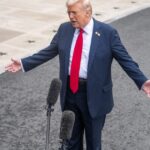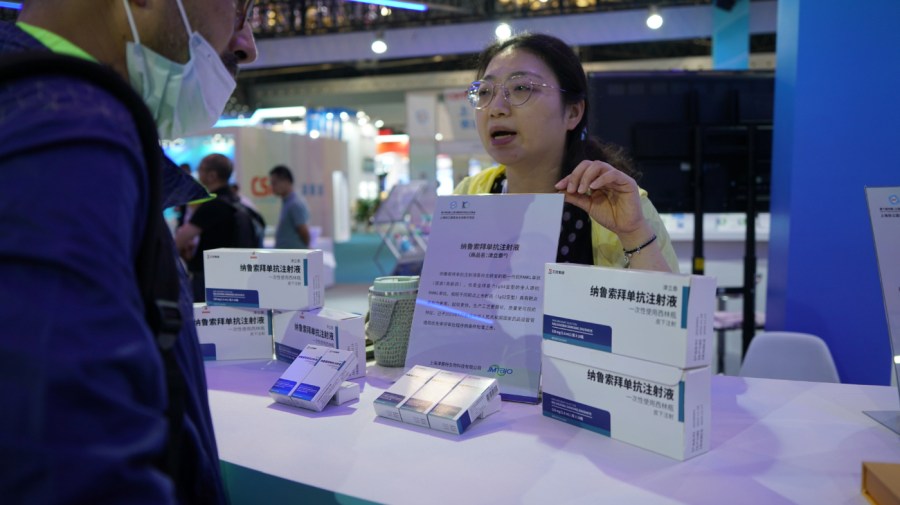Biotechnology is one of the most potent engines of American prosperity. The United States has led the world in turning scientific discoveries into life-saving therapies.
But this leadership didn’t come from government command. It was from a policy environment, imperfect but functional, where risk was rewarded, intellectual property was protected and private markets, not bureaucrats, determined what made it to patients.
That foundation is now in danger. The real threat to American biotech leadership is not Beijing. It is Washington. Recent policies have taken a decisive turn away from markets and toward micromanagement.
The Inflation Reduction Act gave Medicare broad authority to dictate drug prices. In May, the White House issued an executive order reviving a Most Favored Nation pricing model, tying U.S. drug prices to those in countries where government-run systems suppress prices through arbitrary caps and rationing.
And now the Trump administration is proposing efforts to impose 100 percent tariffs through section 232 on pharmaceuticals not made in America and use Most Favored Nation pricing with some Pfizer drugs in exchange for lower tariffs.
These policies may sound politically popular, but their economic effects are clear and deeply harmful.
A National Bureau of Economic Research study found that a 40 to 50 percent cut in expected drug prices would reduce early-stage research and development by 30 to 60 percent. That means fewer new therapies. It means longer wait times. And it means American patients will increasingly be last in line for the very treatments our companies invent.
At the same time, the federal government already controls close to 60 percent of all health care spending. This is not a functioning market. It is a hybrid system where the government skews demand through subsidies, inflates costs through regulation, and then blames the private sector for the results.
And as Washington tightens its grip, China is seizing the opportunity. Beijing’s “Made in China 2025” plan has identified biotech as a national priority.
In 2009, China accounted for just 1 percent of global Phase I to III clinical trial starts (by company headquarters location). By 2024, that figure had risen to 30 percent. Over the same period, the U.S. share fell from 39 percent to 35 percent. At the current pace, China is on track to surpass the U.S. in global trial share by 2027.
This is not just a symbolic milestone. Clinical trial activity reflects scientific leadership, investor confidence, and access to innovation. When trials leave the U.S., so do the jobs, the funding, and the first-in-line access to next-generation treatments.
China also holds a growing lead in STEM talent production. In 2020, it awarded more than 338,000 advanced STEM degrees, compared to just 221,000 in the U.S. That gap is widening, and if trends continue, China could be graduating more than twice as many advanced STEM graduates per year by 2040.
Drug approvals are likely to decline under price control regimes. The U.S. currently approves about 55 to 60 novel active substances annually. Under price mandates like those in the Inflation Reduction Act and Most Favored Nation policies, this number could fall below 30.
Meanwhile, China is doubling down on its plans to overtake U.S. leadership. If China can stay its course, it can watch while Washington makes decisions blocking the U.S. from innovating.
These converging trends — shrinking trial share, surging STEM talent in China, falling research and development investment and fewer drug approvals — paint a clear picture. If the U.S. stays on its current path, it will surrender its biotech lead not because China wins, but because Washington quits.
The core of the problem is not market failure. It is a government failure. And the solution is not more command-and-control policy. It is a return to the free-market principles that allowed U.S. innovation to flourish in the first place.
Biotech development costs more than $2 billion per drug and takes more than a decade. Most attempts fail. The only reason investors take that risk is the possibility of earning a return and reinvesting in the next breakthrough. Take away that incentive, and the pipeline dries up.
Europe has shown us what happens when governments try to suppress prices from the top down. Patients wait years longer for new drugs, and many treatments never make it to market at all. That is not a future the U.S. can afford.
Biotech is not a luxury sector. It is at the forefront of medical progress. It is also a strategic industry. If the next cure for cancer or Alzheimer’s is developed, it will likely be here.
The United States has a choice. It can continue to lead the world in innovation, prosperity and public health. Or it can impose more government control, more price-setting, and more delays — and watch that leadership vanish.
The world is watching. Investors are watching. And patients, most of all, are watching. The question now is whether Washington will get out of the way before it’s too late.
Vance Ginn, Ph.D., is staff economist at Americans for Tax Reform, president of Ginn Economic Consulting and previously served as chief economist of the White House’s Office of Management and Budget during the first Trump administration. Follow him on X @VanceGinn.














